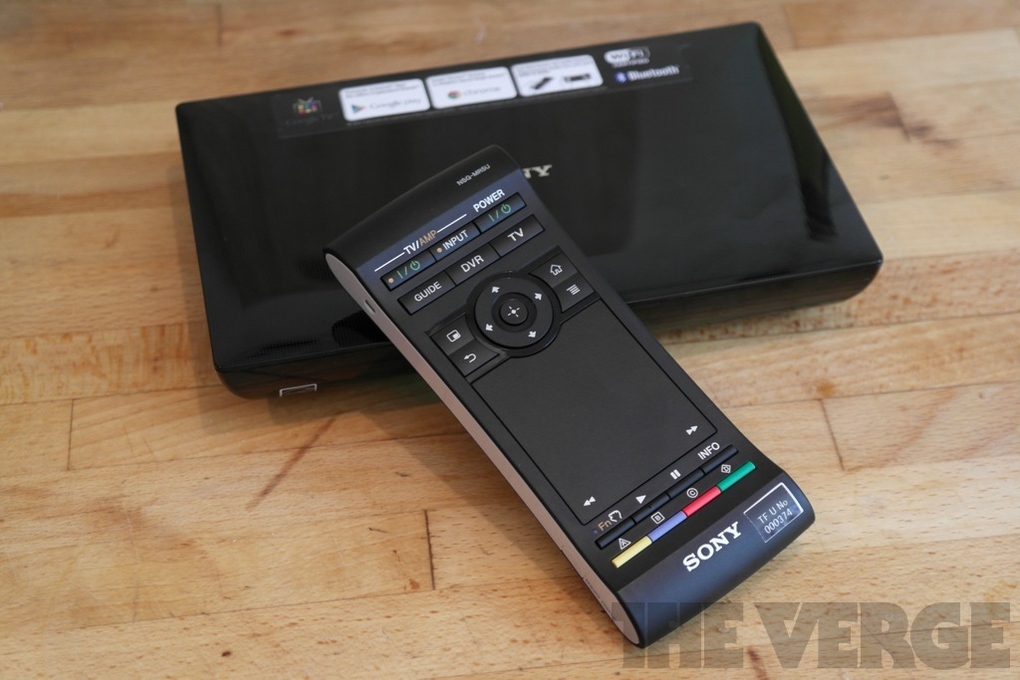- Joined
- 6 May 2012
- Messages
- 4,874
- Reaction score
- 9,654

There is a wave of new Google TV devices ready to hit the market, led by the Sony NSZ-GS7 set-top box. Sony previously sold only TVs with Google TV baked in, but the $199 GS7 adds the OS to the TV you already own. (There's also the $299 NSZ-GP9, which includes a Blu-ray player as well.) It features a new, more powerful processor, and thanks to Google's frequent updates, a hugely improved operating system with more apps, more features, and a simpler interface. Do the new hardware and new software work together to create a Google TV finally worth watching? Read on.
Hardware / design
DECENT BY ITSELF, FAR BETTER WITH CABLE
All we ask of a set-top box is that it slide easily and unnoticed into the stack of boxes and gadgets next to my TV. Sony meets that criteria with the 1.3-pound GS7, and still manages to inject at least a little bit of design flair into the device. It's a glossy, black rectangle, a little big at 8 inches wide and 1.3 inches tall, with a curved front so that there's a slight lip on the top. The top has slightly raised dots all over it, which are nice-looking, but you'll probably never see the top and almost definitely won't ever notice it.
There are no controls or buttons anywhere on the device, and all the ports are on the back — after fuming at all the devices requiring USB cables to stick out the front, I couldn't be happier. You get HDMI in and out, digital optical out (for audio), an IR blaster, ethernet, two USB, and a big two-pin power adapter. It's a solid selection of ports, letting you connect a couple of external drives or devices to the GS7, though I'd always like an RCA connection for the legacy devices I just can't get rid of. Thanks to wide file support, the GS7 is an excellent conduit for playing back content you have stored on hard drives, in addition to all the streaming capabilities. Since everything is on the back of the GS7, the sides and bottom are used for vents.
Remote
The GS7 comes with a clicker that does feel considerably more like a remote than the game controller-like accessory for the company's TVs. On one side of the hefty, .75-inch thick slab are the remote-like buttons: six power and input controls up top, and playback controls plus a few colored function buttons on the bottom. In between, there's a matte black, clickable trackpad below a five-way directional button and four Google TV controls. The four Google TV buttons mostly mirror the Android controls: you get Home, Menu, and Back, but Android's Search button is swapped for a picture-in-picture toggle that lets you watch live TV in a small (sadly unmovable) window while you do something else.
Setup
Setting up the GS7 isn't difficult, it's just arduous. There's a handy guide that comes up when you first plug the device in that helps you get the box tuned to your TV and inputs, and it does a decent job of leading you through the various steps. The problem is, there are an insane number of steps.
First you connect to your Wi-Fi network. Then, you use the arrow keys to tell the device how big your TV is (how is this not an automatic process yet?). You can use the GS7's remote to control your TV set, but that's another step that requires knowing your TV's hexadecimal model number — I certainly didn't know it, and I bet you don't either. Then you set up your cable box, DVR, network... on and on the list goes. No single step is particularly difficult (except the ones that involve remembering your TV is the LG 42CS560), but it's a brutal half hour-long process that really needs to be simplified before any Google TV device becomes a mainstream product.
Software and performance
Under the hood, the GS7 features a new ARM-based Marvell 1500 processor, the same one inside nearly every device in the wave of Google TV products announced at CES. Bluetooth and Wi-Fi (still 2.4GHz-only) are also built in, but the the dual-core 1.2GHz SoC is the flagship improvement. It's considerably more powerful than the previous processors inside Google TV devices, and the spec bump matters — there's almost no interface lag, and everything happens a full beat faster than it used to. The blue, spinning "Loading" wheel almost never shows its face, though it's not totally gone. HTML5 apps don't run totally smoothly, and neither do Flash websites, but both are vastly improved. The Marvell chip was designed specifically for Google TV products, and it shows.
Snaps of the Sony NSZ-GS7 STB, Remote and the Software UI


































Source and Image Credit: Verge
